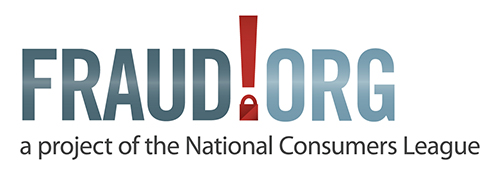About Us
Fraud.org is a project of
The National Consumers League.
info@nclnet.org
(202) 835-3323
1701 K St NW
Suite 1200,
Washington, DC 20006
© Copyright 2025. All rights reserved.
Each year, the National Consumers League analyzes the thousands of complaints received at Fraud.org from consumers and releases it to the public, in order to track trends in scams and to use as an educational tool for fraud prevention.
No one wants to be the victim of fraud, but in 2024, the most expensive scam by far was cryptocurrency investment schemes. The reported median loss of $30,000 was $10,000 higher than in 2023, the highest median loss of any fraud type. Cryptocurrency investment scams typically involve a criminal contacting a victim with an offer of low or no-risk returns on cryptocurrency investing. Such schemes often involve convincing-looking fake websites to make them seem more trustworthy. After the victim invests sufficient funds, the criminal disappears with the victim’s money.
When criminals find a scam that works, they tend to stick with it. That was the case in 2024, when complaints involving fake sweepstakes and bogus gift offers were again the top scam category, making up over a third of all fraud reports (38.27%). Criminals running sweepstakes scams overwhelmingly relied on the telephone to reach potential victims, with 87% of reports indicating that a phone call was how the scam began. Phishing/spoofing scams (18.83% of reports) and Internet merchandise scams (17.04% of reports) rounded out the top three fraud categories for the second consecutive year.
Scammers are increasingly looking to get victims to send them money via methods that lack strong consumer protections. Bank Account Debit (includes personal payment apps) and wire transfers made up 33.1% and 12.92%, respectively, of complaints that involved a loss. The two payment methods saw 23.12% (bank account debit) and 33.47% (wire transfer) increases year-over-year. When consumers are convinced to send scammers money via these methods, it is nearly impossible for the victim to recover funds since such payments are typically not protected under federal law.


Methodology
The National Consumers League Top Ten Scams report analyzes 2,526 complaints submitted by consumers to NCL’s Fraud.org campaign in 2024. This data is self-reported and should not be considered a nationally representative sample of fraud victims. NCL shares complaint data with a network of law enforcement and consumer protection agency partners who combine it with other data sets to identify trends in fraud and build cases.
The bottom line
Regardless of the type of scam, many instances of fraud can be avoided by remembering the old rule of thumb: If something seems too good to be true—it probably is.
If you ever do have questions about a potential fraud or think you might be a victim of a scam, report it immediately via Fraud.org’s secure online complaint form. Embarrassment or fear of friends and relatives finding out about the crime causes many victims of fraud to remain silent. Only by speaking out can we give law enforcement the tools they need to bring these criminals to justice.
About this report
Fraud.org’s Top Ten Scams report is compiled annually from complaints received directly from consumers. We do not attempt to verify the authenticity of these complaints, nor do they represent a scientific sample. To get more information on these scams or report suspected fraud, please visit Fraud.org.
Fraud.org is supported by the generous donations by members of our community. You can make a secure, tax-deductible gift here.
Fraud.org is a project of
The National Consumers League.
info@nclnet.org
(202) 835-3323
1701 K St NW
Suite 1200,
Washington, DC 20006
© Copyright 2025. All rights reserved.
